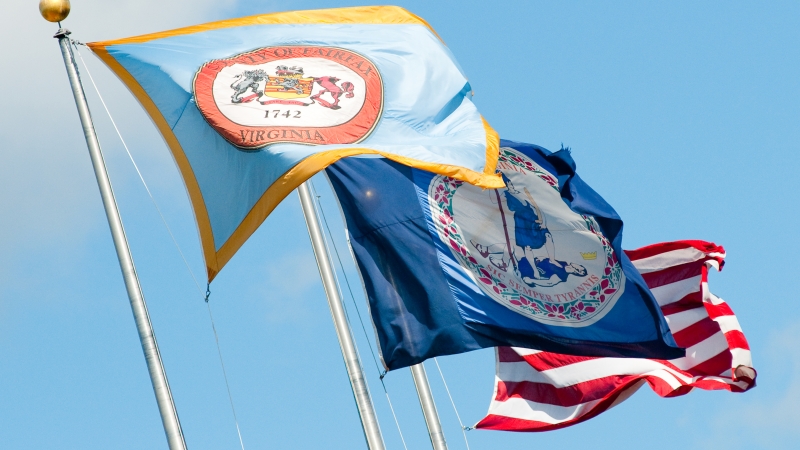Presentation: Fairfax County Youth Substance Use Trends
Presentation slides for the educational webinar on youth substance use trends.
Webinar Presentation Video
A video recording of the Fairfax County Youth Substance Use Trends Webinar is available in the following languages: English, Amharic, and Spanish.
Objectives
Increase awareness and understanding of:
- substance use trends among youth
- risk factors associated with substance use
- opioids and the dangers associated with them
- signs of substance use and overdose
- prevention and treatment resources available and how to access them
Moderator
Stefan Mascoll, Fairfax County Public Schools (FCPS) Coordinator for Student Safety and Wellness
Panelists:
- Fairfax Health Department – Adam Allston/René Najera
- Fairfax County Police Department (FCPD) – Anne Rizza
- FCPS –Stephanie Beguin-Howard/Kelly Rankin
- Fairfax-Falls Church Community Services Board (CSB) – David Edelman/Birgit Snellenburg and Marla Zometsky
- Fairfax County Neighborhood and Community Services (NCS) – Jesse Ellis
Local Effects of the National Epidemic
- The decrease in fatal and non-fatal opioid overdoses in the Fairfax Health District (Fairfax County, Fairfax City, and Falls Church City) observed between 2017 and 2019 did not continue past 2020
- Similar to national and state data, local data on fatal and non-fatal opioid overdoses has been trending higher in 2021 compared to 2020
- Individuals of all ages are impacted by the opioid epidemic, with those in the 18 to 34 age group having the highest rates of fatal and non-fatal overdoses in the Fairfax Health District in recent years.
Overdoses in Adolescents
- Data on overdoses among adolescents, age 12-17, from Emergency Departments and Urgent Care Centers in Fairfax County, Fairfax City, and Falls Church
- After a decrease from 5 cases in 2016 to none in 2019, the number of opioid overdoses has increased to 11 in 2021
- 6 as of March 21, 2022
- •Fentanyl is the opioid identified in most overdoses among all age groups
FCPD Overdose Investigation Unit (OIU)
- 2021: 271 Non-Fatal Overdose Investigations
- Nearly 50% had previously overdosed
- 9 involved individuals under 18
- 2022 (as of 3/20/2022): 49 Non-Fatal Overdose Investigations
- 7 involved individuals under 18
- 2021: 89 Fatal Overdose Investigations
- One involved an individual under 18
- 2022 (as of 3/20/2022): 17 Fatal Overdose Investigations
OIU: Trends/Awareness
- Significant increase in the presence of fentanyl in counterfeit prescription pills (Percocet/Xanax)
- DEA lab testing reveals 4 out of every 10 pills with fentanyl contain a lethal dose (dea.gov)
- Fentanyl is a common substitute or cutting agent in illicit narcotics such as Cocaine, MDMA, and Heroin
Why is fentanyl so dangerous?
Fentanyl is a powerful synthetic opioid analgesic, similar to morphine, BUT is 80 to 100 times more potent. There have been cases where other substances have been laced with fentanyl, increasing potency.
source: DEA
What To Look For
Slide includes photos of authentic and counterfeit versions of Percocet and Xanax.
Safeguards & Law Enforcement Response
- Encourage guardians to monitor juvenile associations and whereabouts
- Urge guardians to regularly review correspondence through electronic devices and social media
- Following an overdose incident, the primary objective of law enforcement is to identify and apprehend the source of supply
- Victim/Guardian cooperation is key in tracking down the source of supply but more importantly locating & confiscating any additional substances the victim may have access to
Self-Reported Substance Use
Percent of FCPS 8th, 10th, & 12th graders who report using substances in the past month, 2019 Fairfax County Youth Survey
Graph of Top Substances of Concern at Time of Referral to FCPS SAP Program
Source: FCPS SAP Data (2021-2022 School Year through Feb 2022)
Why Youth Use Substances
Photo of students
Why Do Young People Use Drugs
- To fit in: Peer pressure or perception of peer use
- To feel good: feelings of pleasure or euphoria
- To feel better: dealing with trauma, mental, emotional, physical pain or stress
- To do better: physical or cognitive performance enhancement
- To experiment: new experiences, coping with boredom
- Addiction and dependence: increased tolerance, chronic drug seeking adverse symptoms associated with withdrawal
Source: National Institute on Drug Abuse, bit.ly/36mBchn
Addiction
- Many Americans are impacted by addiction in some way.
- Addiction does not care about race, religion, ethnicity, or socioeconomic status. It can happen to ANYONE.
- Every person who suffers from addiction started with that first drink, pill, or puff.
- Educate yourself or ask a SAPS about the Stages of Addiction.
Parent/Guardian Tip:
Do NOT shy away from talking about drugs and alcohol because you fear it will put ideas in their head. Make sure your child understands your values around substance use. Children of parents who communicate that drug and alcohol use is wrong are statistically less likely to use.
What is Addiction?
- A Brain Disease
- Addiction is characterized by:
- Inability to consistently Abstain;
- Impairment in Behavioral control;
- Craving, or increased “hunger” for drugs or rewarding experiences;
- Diminished recognition of significant problems with one’s behaviors and interpersonal relationships; and
- A dysfunctional Emotional response.
Source: 2016 American Society of Addiction Medicine
Drugs and the Adolescent Brain
- Dopamine levels are lower in teenagers, means they feel BORED and makes them more susceptible to false surges of dopamine delivered by drugs
- Reward system highly developed in teenagers, but prefrontal cortex not so much
- More likely to take risks and only pay attention to the positive part of their decisions/actions
- Dopamine creates feelings of calm and control.
- Major changes in the brain during this time. Pruning, forming new neural connections, and myelin.
Source: National Institute on Drug Abuse and Siegel, Dan, Brainstorm, 2014
What are Opioids?
Opioids is a term used for the entire family of opiate drugs, including natural, synthetic and semi-synthetic.
These drugs are chemically related and interact with opioid receptors on nerve cells in the body and brain.
OPIOID DRUGS INCLUDE:
- Heroin
- Buprenorphine
- Codeine
- Fentanyl
- Hydrocodone
- Percocet = Oxycodone + Acetaminophen
- Hydromorphone
- Meperidine
- Methadone
- Morphine
- Oxycodone
What are Opioids? (continued)
- Opioids are HIGHLY addictive.
- Opioids are necessary pain medications used everyday to help people manage pain.
- Opioids can also be illegal drugs sold on the street.
- Opioids are responsible for the majority of drug overdoses in the nation and Virginia.
- Opioids prescribed by doctors can be abused and may lead to addiction (i.e. sports injuries, etc.)
- ANYONE can become addicted to opioids.
Side Effects of Using Opioids
- Increased sensitivity to pain
- Anxiety & depression
- Slowed breathing
- Severe constipation
- Difficulty urinating
- Decrease in immunity
- Organ failure
What Does an Opioid Overdose Look Like?
- Not Responding - Doesn’t move and can’t be woken
- Slow or Not Breathing - A breath every 5 seconds is normal
- Making Sounds - Choking, gurgling sounds, or snoring
- Blue Lips & Nails
- Cold or Clammy Skin
- Tiny Pupils
Opiate Withdrawal Timeline
Image of the timeline for opiate withdrawal
After last dose, symptoms last 6-12 hours for short-acting opiates.
After last dose, symptoms last 30 hours for long-acting opiates.
After 72 hours, symptoms peak (nausea, vomiting, stomach cramps, diarrhea, goosebumps, depression, drug cravings)
What Can Parents Do?
Signs and Symptoms at Home
- Avoiding contact or conversations
- New friends you don’t know
- Increased mood swings, irritability, outbursts of anger
- Changes in eating and sleeping patterns
- Missing money or prescriptions
- Changes in physical appearance
- Loss of interest in hobbies or sports
- Lying (especially about who, what, and where)
- Secretive conversations with friends
Signs and Symptoms at School
- Skipping school (classes or full days)
- Suspension
- Failing grades
- Falling behind in class work
- Lack of motivation, apathy
- Excessive sleeping in class (especially after lunch)
- Defiance of rules, constant discipline issues
- Cheating
- Stealing
- Freely talking about drug use
- Erratic behavior changes on a day to-day basis
Communicating with your Teen about Drugs
- Approach them from a place of love.
- Talk about the why behind the use.
- Communicate clear family rules and expectations of your teens.
- Get them involved in positive activities.
- Help them access treatment or other forms of help.
- Be a good role model.
3 to Succeed
YouTube Video: 3 to Succeed - the Factors That Matter in a Child's Life
Prevention Strategies
- Parental/Caretaker Supervision
- Talk to your child about drugs and family rules/expectations around substance use
- Get teens involved with sports/activities/clubs/hobbies
- Be a positive role model
- Get child/family treatment for trauma, grief, family addiction, mental health concerns, etc.
- Take care of your physical, emotional and mental health.
Prevention Strategies
- Talk with your doctor about pain management and avoid unnecessary opioids; ask about alternatives.
- Never take opioids in greater amounts or more often than prescribed.
- Never sell or share prescription opioids.
- Monitor your child’s use of prescription medications
- Dispose of medication and lock up prescriptions, other commonly abused substances, & alcohol (contact your SAPS for medication lock boxes and disposal kits or visit a local CSB office: http://bit.ly/med-lock-box)
- Take a CSB REVIVE! training to learn how to recognize and reverse opioid overdoses
- Visit www.KnowRX.org for more information
REVIVE!
- REVIVE! trains individuals on:
- How to recognize the signs and symptoms of an opioid overdose
- How to administer naloxone to potentially reverse the effects of an opioid overdose
- What to do and not do when responding
- Each attendee receives a free REVIVE! kit, which includes all the supplies needed to administer naloxone.
- Free Naloxone to Fairfax County residents
- Spanish Course Available
- More information and upcoming training dates: http://bit.ly/revive-csb
Early Intervention and Treatment Services
FCPS Substance Abuse Prevention (SAP)
Services:
- Tier 1: Education & Outreach for All Students, Families, Staff & Community
- Prevention lessons/presentations
- live, webinar, podcast, social media, classrooms, community
- students, parents, teachers, community members
- Community outreach
- Prevention campaigns, initiatives, social media messaging
- Prevention lessons/presentations
- Tier 2: Individual & Group Brief Intervention/Counseling:
- Referrals
- discipline & non-discipline
- Brief screening, education, counseling
- Referrals
- Tier 3: Refer student/family to outside resources (higher level of care)
- Partnerships with CSB & other community and private agencies and treatment centers
Fairfax-Falls Church Community Services Board (CSB)
- Outpatient
- Individual Therapy
- Family Therapy
- Group Therapy
- Day Treatment /Partial Hospitalization
- Residential/Inpatient/Detox
- Familiar Concept of Least Restrictive Environment
Supporting a Student in Treatment
- When a student is in school and in treatment
- Finding safe places in school
- Activities that do not have drugs involved
- Staying in touch with parents
- Students returning from inpatient, residential or day treatment
- To support a student’s return to school, a discharge plan should be done by the treatment provider
- Reach out to SAP or school social work prior to discharge from a program to ensure there are no gaps in service
Healthy Activities for Kids
Finding Fun and Safe Programs
Benefits of Recreation Programs
- Safety
- Fun
- Healthy activities
- Academic support
- Social emotional development
- Positive relationships
- Good role models
Neighborhood and Community Services
The following programs are have after-school programs and summer programs:
- SACC
- Grades: K-6
- Locations: 100+
- Community Centers
- Grades: K-12
- Locations: 9 (3 more soon to open!)
- Teen Centers
- Grades: 7-12
- Locations: 12
- Tech Centers
- Grades: K-12
- Locations: 14
- Therapeutic Recreation
- Grades: K-12
- Locations: 10+
Other Programs
- Middle School After-School Program
- Park Authority “Parktakes” programs
- Community sports programs
- Community-based after-school programs
Connecting to Resources/Services
CSB
If the situation is immediately life-threatening, call 911.
- Fairfax-Falls Church CSB Emergency Services (24/7) - Available for people who have a mental illness, substance use disorder, and/or developmental disability in need of immediate help
703-573-5679 https://bit.ly/CSB247 - CSB Entry and Referral - Assessment and referral services available for youth, adults, and pregnant women including office-based opioid treatment
703-393-8500 https://bit.ly/CSBentry - CSB Fairfax Detoxification Center (24/7) - A short-term residential program to help adults safely detoxify from the effects of drugs and/or alcohol
703-502-7000 https://bit.ly/CSBdetox - CR2 (24/7) - Provides rapid response to children, youth, and adults facing a mental health and/or substance use crisis.
572-364-7390 www.cr2crisis.com - REACH (24/7) - Crisis stabilization for persons with developmental disabilities.
855-897-8278 https://bit.ly/3Lc6YwX - CSB REVIVE! - learn how to recognize and reverse opioid overdoses
http://bit.ly/revive-csb - Safe medication storage/disposal – request a free medication lock box/drug disposal kit
http://bit.ly/med-lock-box
National Suicide Prevention Lifeline: 1-800-273-8255
- Veterans – Press 1
- En Espanol: 1-800-628-9454
- suicidepreventionlifeline.org
Crisis Text Line: Text HOME to 741741
- A live, trained Crisis Counselor receives the text and responds through a secure online platform.
- https://www.crisistextline.org/
PRS CrisisLink: 703-527-4077 Text line: CONNECT to 855-11
- offers crisis intervention, suicide prevention, and support to individuals in order to foster self-sufficiency by providing problem-solving skills and information on community resources so callers and texters can better cope with emotional trauma, personal and family crises.
- https://prsinc.org/crisislink/
FCPS SAPS
- Parents/Guardians can call their child’s school front office staff or ask their counselor to connect to their school’s assigned SAP Specialist.
OR - Contact the Office of Student Safety and Wellness: https://bit.ly/3tG5Mw0
571-423-4270
Additional SAP Program info:
- FCPS resources
- Search Keywords: ATOD, SSAW, Vaping
Additional Resources
- NCS Prevention: prevention programs on topics such as substance use and effective parenting available upon request by schools/organizations; email: [email protected]
- Child Mind Institute: provides resources parents can use to teach kids mental health and coping skills
https://childmind.org - Youth Mental Health First Aid: certification course for adults working with youth
https://bit.ly/3tEp1pF - Chris Atwood Foundation: local non-profit providing a wide range of substance use services
https://www.thecaf.org/ - Northern Virginia Family Services (NVFS): offers many programs including mental health youth services and multicultural mental health services; can access NVFS services by connecting with your child’s FCPS school social worker, counselor, or parent liaison or via website/phone
www.nvfs.org - Healthy Minds Fairfax: provides information on identifying behavioral health needs and finding care
https://bit.ly/36OAha0 - Fairfax County Opioid and Substance Use Task Force: County-wide effort to address the opioid epidemic
https://bit.ly/3JJ18Th
Questions?





